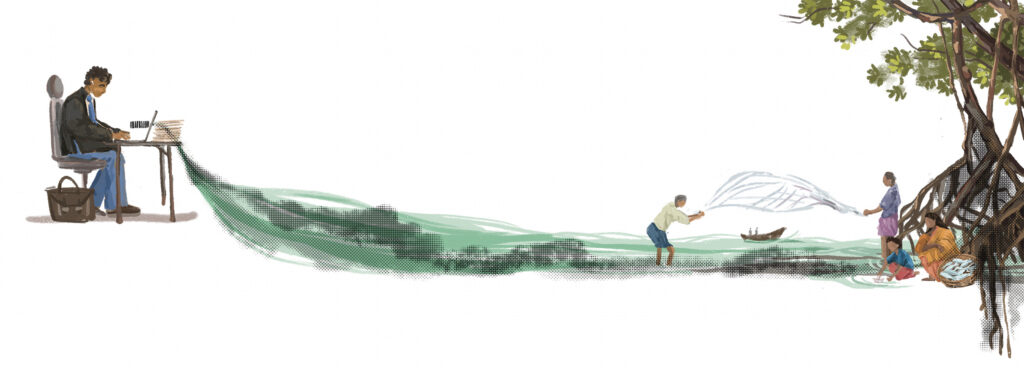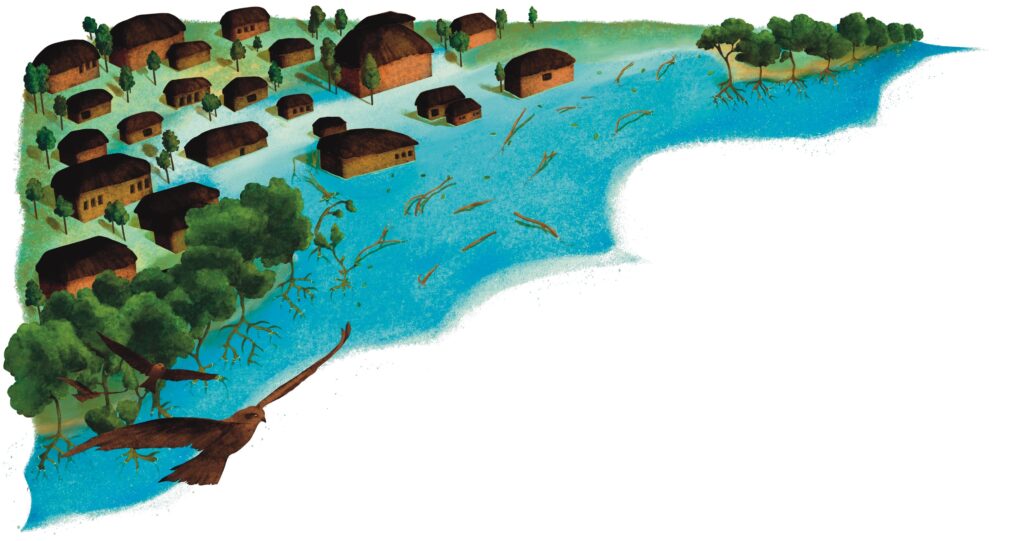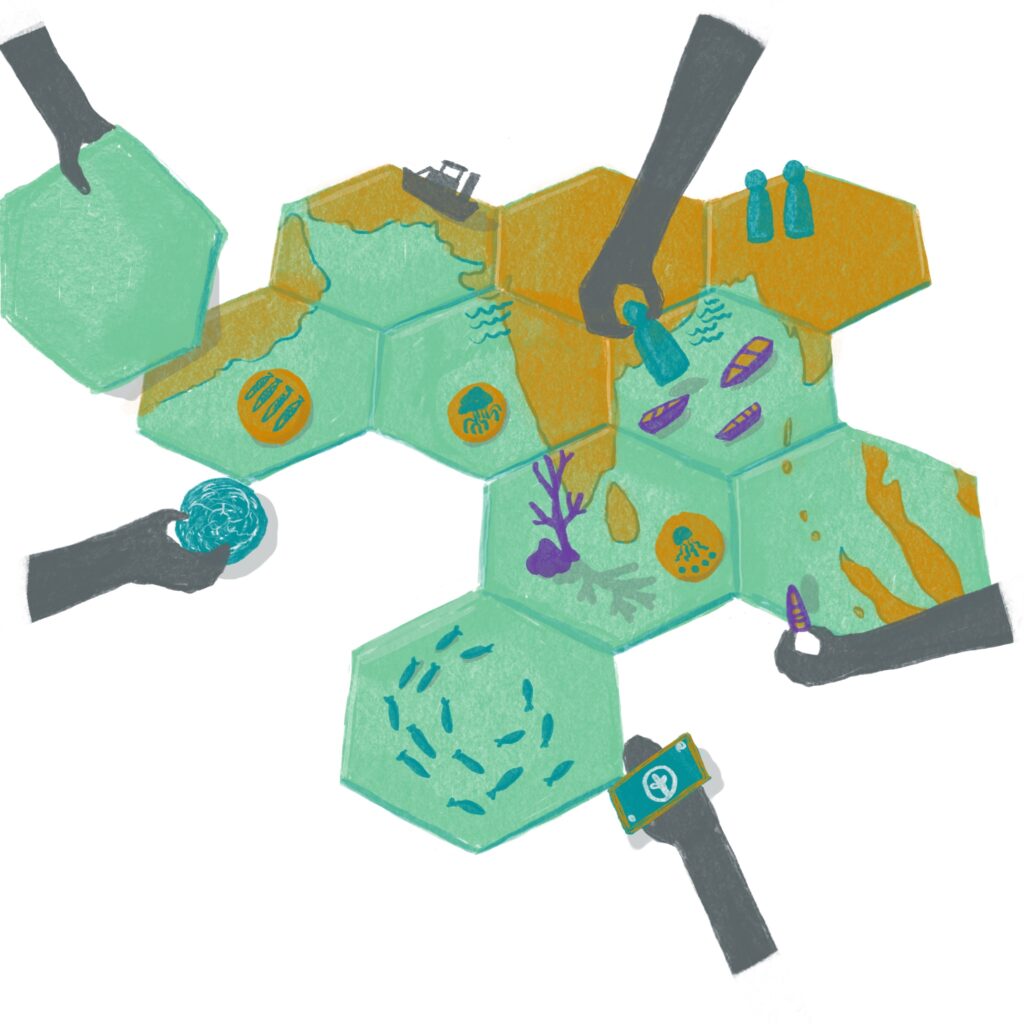Conservation in the tropics is a messy business. Conducting biodiversity surveys, persuading governments to gazette protected areas and adopt conservation laws is of fundamental importance. However, it is a necessary but not sufficient condition for achieving conservation. In many places where conservation is most needed, institutions and the rule of law are weak and conservation outcomes are determined by the daily decisions and actions of numerous local stakeholders. Some are rich and influential and operate above the law. Others are desperately poor and struggle to feed their families; they are more concerned with short term survival than long term environmental problems.
Many biodiversity conservation programmes in the remaining extensive forest blocks of the humid tropics are failing to achieve viable outcomes. Too much emphasis is given to what we term ‘grand design’—ambitious and idealistic plans for conservation prepared by outsiders on the basis of purely biological criteria. These plans ignore local realities and the inevitability of change. Conservation institutions need to invest more in understanding and influencing these processes of change. They must constantly adapt to deal with a continuously unfolding set of challenges, opportunities and changing societal needs. The range of conservation options must be enlarged to give more attention to biodiversity in managed landscapes and to mosaics composed of areas with differing intensities of use. The challenge is to build the human capacity and institutions to achieve this.
Conservation plans will not solve these problems; they must be complemented by the sustained support of the people and institutions who will determine forest change on the ground. The serious limitations of pre-planned, time bound projects must be recognised. Threat-based approaches that attempt to preserve the status quo must make way for scenario based programmes where learning and adaptation are paramount. This requires institutions that can deal with new knowledge, with the challenges of climate change and with the continuous evolution of the peoples’ priorities. Conservation organisations need to be stronger in the following three areas:
Scenarios, Social Learning and Adaptation
As an alternative to ‘one-off ’ processes of spatial planning there is a need for adaptive management at the landscape level based upon plausible scenarios. Rather than attempting to resist development, it is important to explore the full ramifications of all development scenarios and identify those that are best, or least bad, for biodiversity. Simple simulation models, visualisation and other less formal scenario development tools can greatly assist this process. Building a consensus around a plausible set of compromises may be more effective than taking stands against development threats. Achieving conservation in large diverse landscapes will usually be a long term incremental process.
‘Muddling Through’ Rather than ‘Conservation by Design’
The multifaceted and complex nature of many conservation situations means that uncertainties and unpredictable interrelationships abound and decision making is difficult. Classic conservation has been a bit like classical music; it has stood the test of time but has been passed down fundamentally unchanged. Managing a complex landscape for multiple functions is more like jazz, a constant process of learning, improvisation and adaptation. Jazz requires just as much skill as classical music but the skill sets are different. Conservation investments should build the diverse skills and teams to deal with situations that are constantly evolving in unpredictable ways. Landscapes may be subject to long periods of slow change punctuated by abrupt transformations. Soy expansion in the Southern Amazon, and oil palm and fiber plantations in Southeast Asia caught conservationists by surprise and these developments swept all conservation plans before them. Conservation requires institutions and tools that are able to anticipate and engage with these emerging drivers of change.
In 1959 Charles Lindblom published ‘The science of muddling through’. It was destined to become a classic and ‘muddling through’ became a basic concept in the world of public policy. ‘Muddling through’ is a process of negotiating amongst stakeholders with different objectives and in situations where there is a deficit of knowledge. Lindblom’s sequel ‘Still muddling; Not yet through’ echoes our understanding of the challenges facing conservationists today. We will rarely achieve any steady state that optimises conservation. In the world’s major tropical forest blocks, finding the balance between global environmental values and local development values will be a process that unfolds over many decades. Serious investments are needed in building institutions and providing funding that can support these processes for the long haul.
Building Local Capacity for Learning and Adaptation
‘Muddling through’ will only produce positive outcomes when institutions exist that can establish and negotiate goals and resolve disputes. Agreements have to be enforceable. There need to be institutions and a policy framework which can favour sustainable resource management in continually changing circumstances. Local people will have conservation objectives but they will often be quite different from those of international conservationists. As practitioners and researchers ourselves, we note with regret that one of the most serious failures of international conservation has been the failure in recent decades to develop local champions and institutions, and to define conservation in ways that are meaningful and attractive to local constituencies. Much of the funding for forest conservation in the tropics still flows from official development assistance agencies which value the planned delivery of short term project outputs more than building long term adaptive capacity.
Conceptually, we must move on from the myth that there is some kind of ‘steady state’ idyllic end point to land use change. In reality, change will be continuous in response to changing climates, economic opportunities and societal values. The agents for these changes are entrepreneurial, opportunistic and fast on their feet. In the real world decisions are not taken on the basis of the objective plans agreed by governments and international conferences but rather emerge from a continuing process of negotiation and deal-making. The conservation movement in the tropics
needs less abstract theorising and idealised plans and maps and stronger constituencies engaged with these messy local processes.
Originally published as:
Sayer, J., G. Bull and C. Elliott. 2008. Mediating forest transitions: ‘Grand design’ or ‘muddling through’. Conservation & Society 6(4): 320-327.
Jeffrey Sayer (jeffrey.sayer@jcu.edu.au) is Professor of Development Practice at James Cook University, Cairns, New Queensland, Australia and Science Adviser, International Union for Conservation of Nature, Gland, Switzerland.
Gary Bull (gary.bull@ubc.ca) is at the Department of Forestry, University of British Colombia, Vancouver, Canada.
Chris Elliott (celliott@wwfint.org) is at the WWF International, Gland, Switzerland





